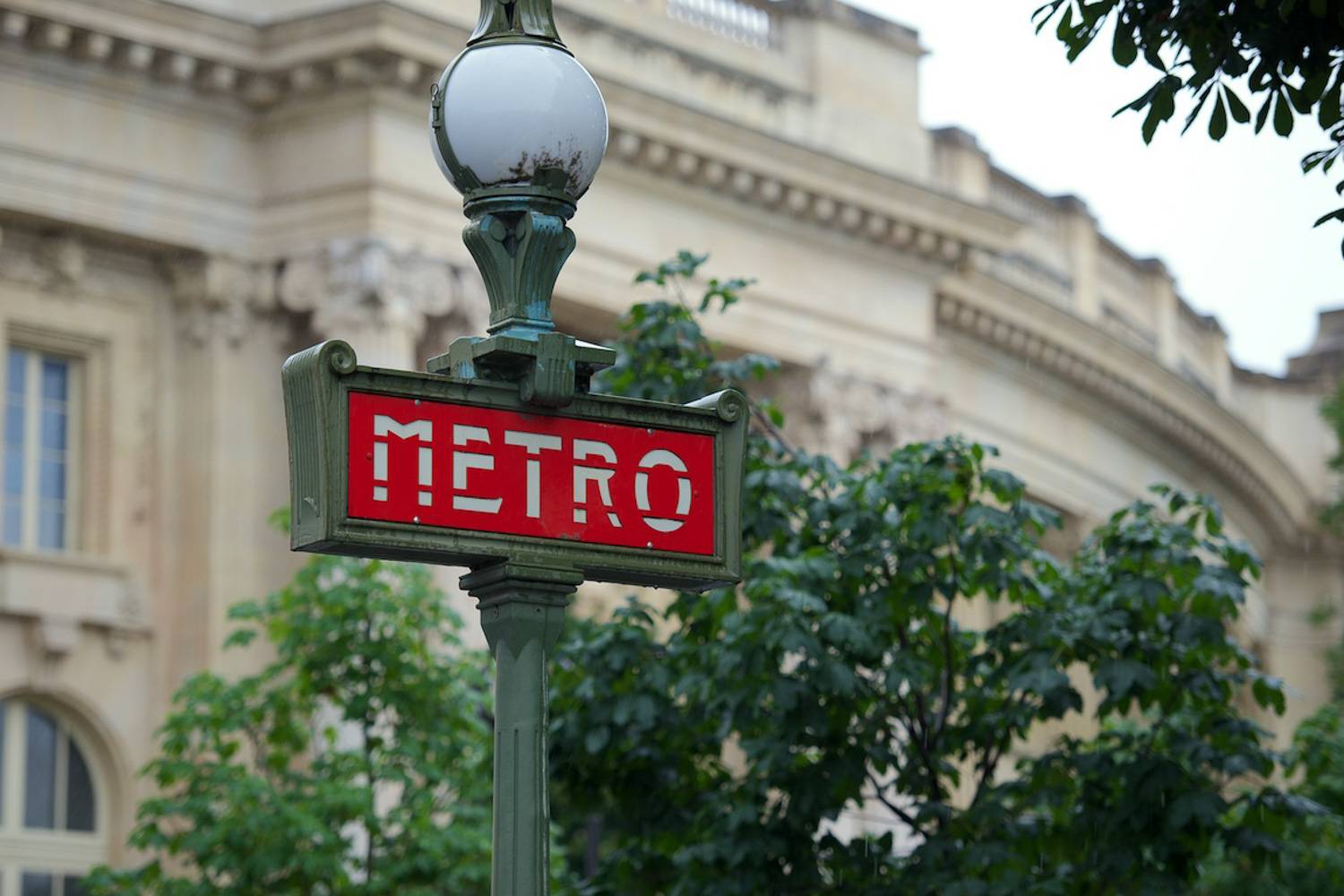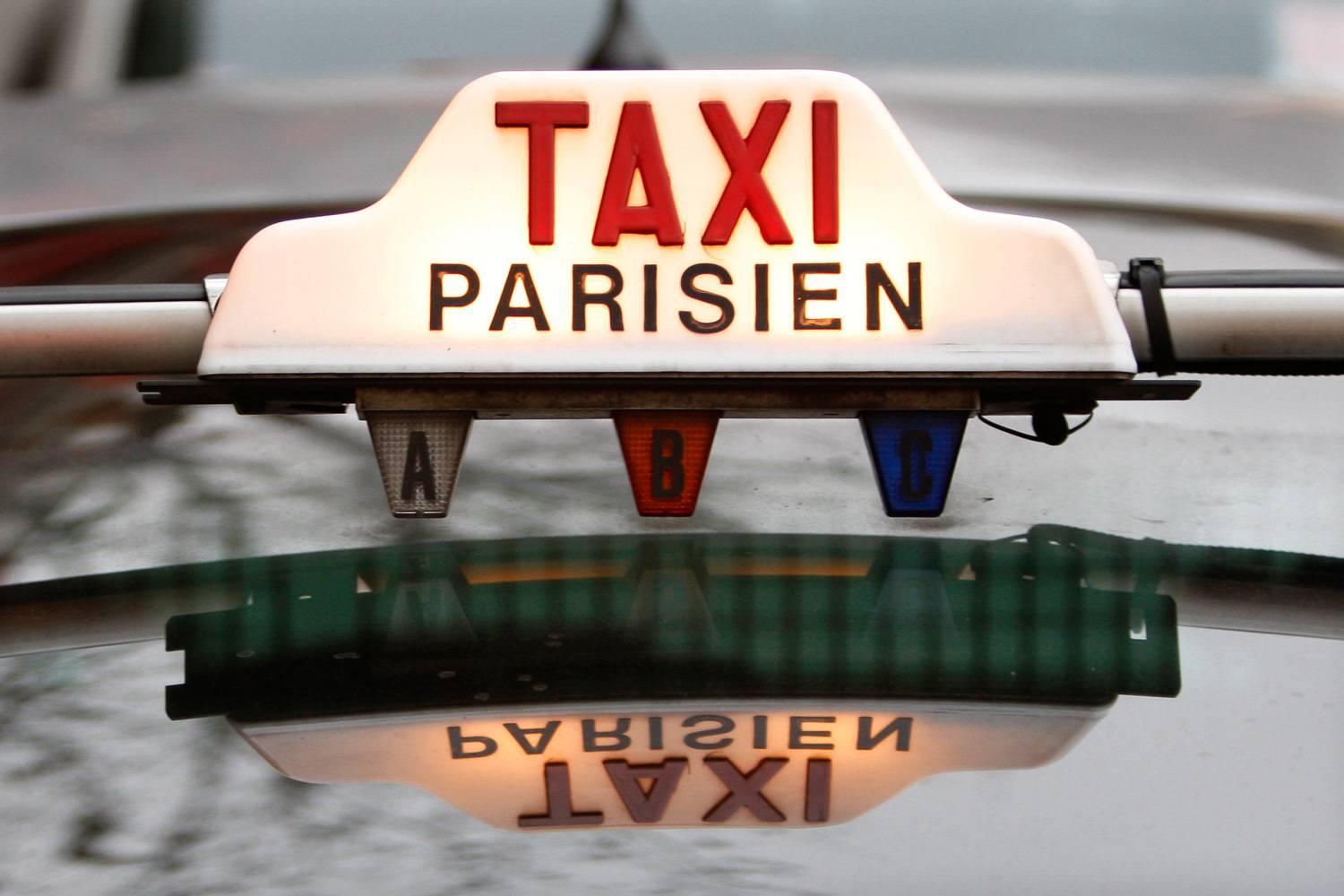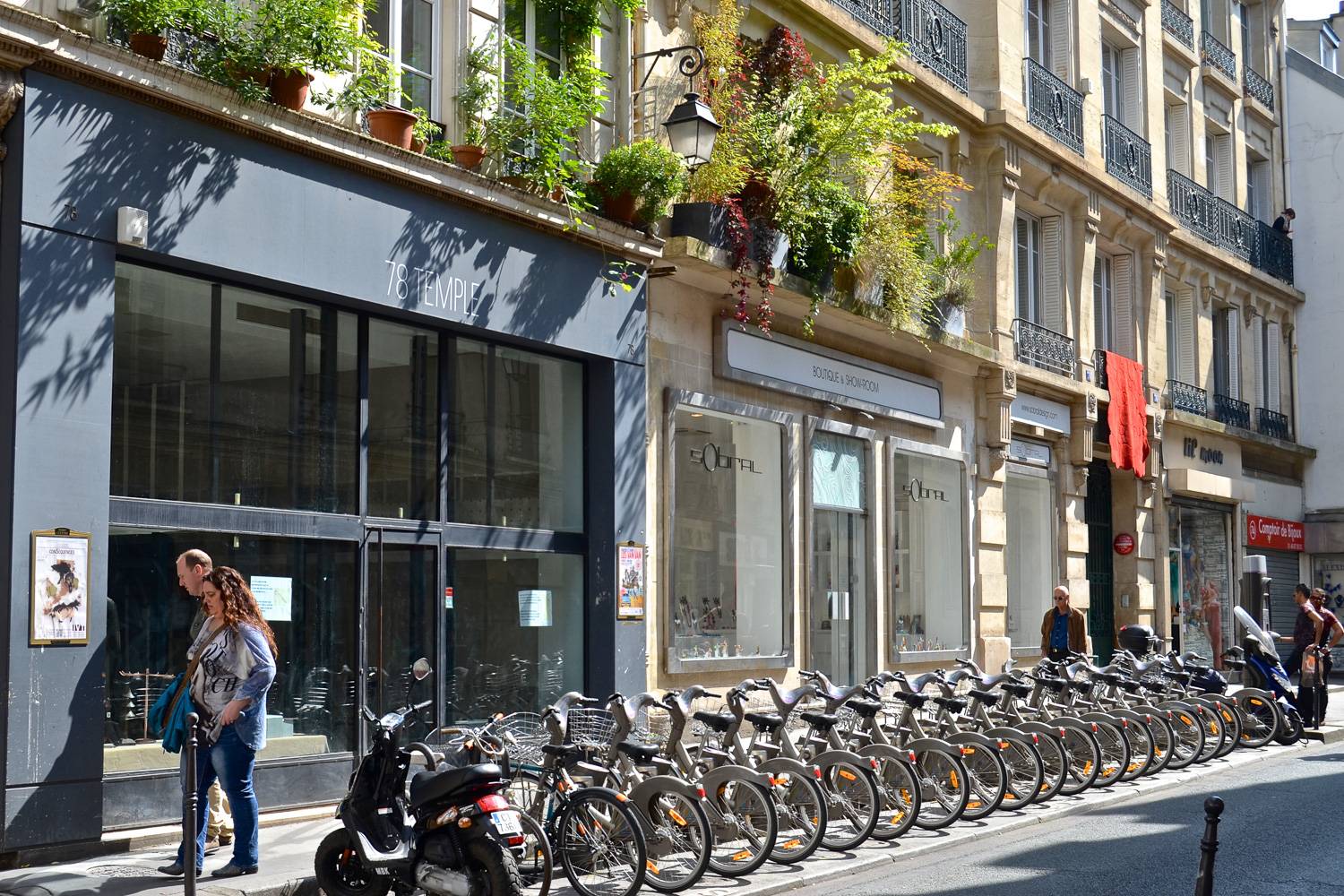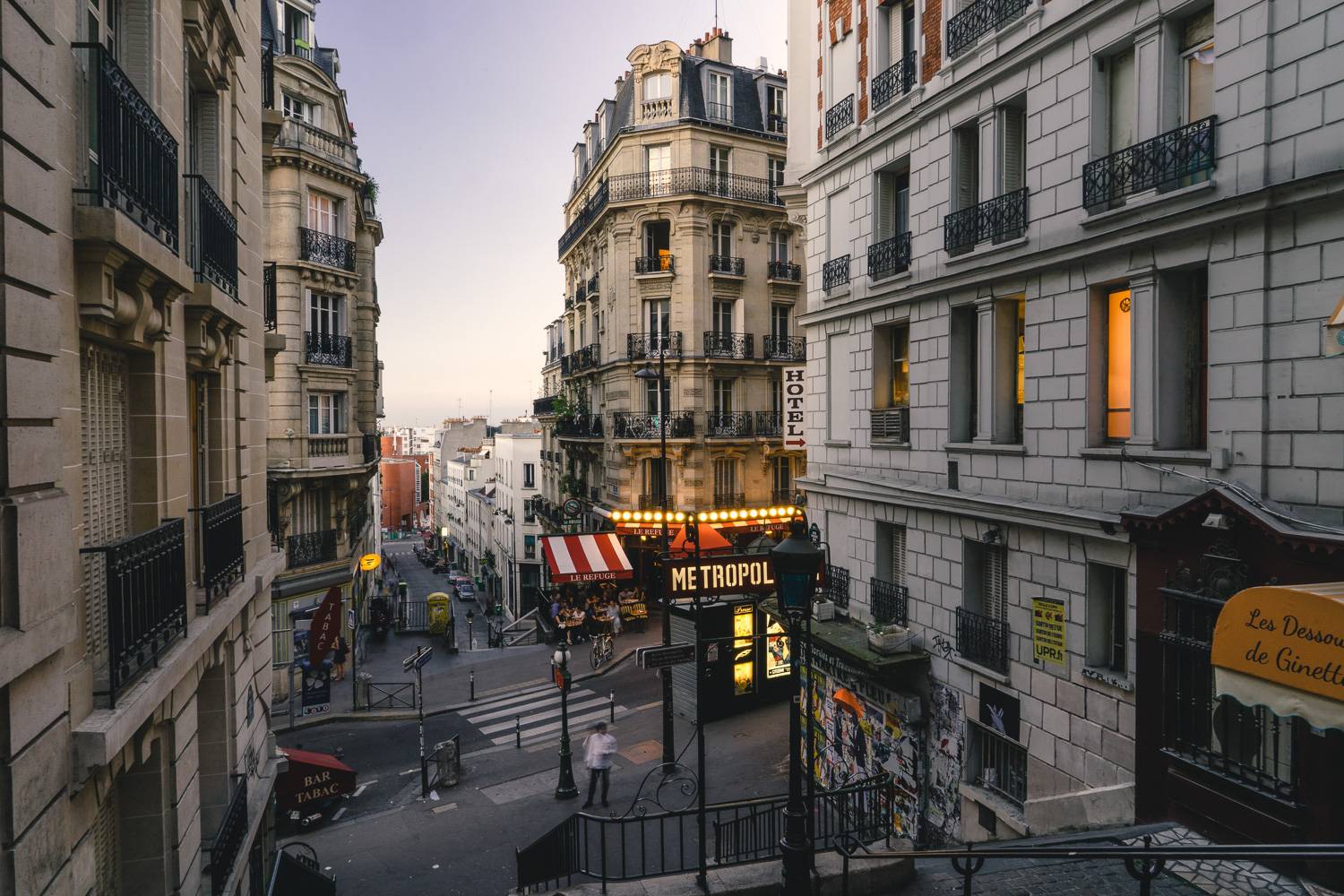
Paris’s Métro system is a work of art that serves the city with pride! (Photo credit: Kevin McGill)
We truly encourage all new travelers or residents of exciting cities like Paris to fully integrate themselves into the culture (i.e. living like a local!). Besides renting an authentic furnished apartment in Paris, there’s one important thing that all visitors to the area must master: getting around the city’s transit system!
Between the comprehensive Métro, a variety of buses and taxis for hire, and the RER commuter rail system, Paris has plenty of options for navigating the city, but understanding an unfamiliar public transportation system can be a bit of an ordeal for new travelers. Fortunately, our guide is here with everything you need to know about your transportation options within the city, plus tips for finding your way and making the most of your experience.
If you’re arriving to Paris from another city or abroad, don’t forget to read about your transportation options into Paris and how to get from your arrival point to your destination in the City of Lights. And of course, if you’re still looking for a destination to call your own, our furnished apartments and vacation rentals in Paris are a great place to start!
Paris Transportation: The Métro

Board a Métro train for one of the most efficient ways to get around the City of Lights. (Photo credit: Chris Sampson)
The Paris Métro (Métropolitain de Paris) is perhaps Paris’s most famous form of public transportation and one of the busiest metro systems in the world. Paris’s Métro is somewhat of a destination in itself, famous for its artistic stations and Art Nouveau-style architecture, and is an icon of the city itself. The Métro is often the fastest and most efficient way to get around within city limits.

Paris’s 16 metro lines are all designated by a unique number and color.
The metro system in Paris consists of 16 lines that are all separately designated by a different color and number. Unlike the subway system in New York City, each color is distinct to its particular line, which can make navigating the trains a bit easier from a visual standpoint if you’re not a French speaker.
You can tell in which direction trains are traveling by the order of the terminating station names. Each Métro train is designated by two stop names, which are the first and last stations on its particular route. The station listed second is the one towards which the train is traveling. For instance, if you see a 1 line train designated by the name La Défense – Château de Vincennes, this means that the train is traveling southeast from La Défense towards the terminal stop at Château de Vincennes.

One of the types of signs marking the entrance to the Métro that you may see in Paris are these dramatic green and yellow arches. (Photo credit: Bradley Weber)
Entrances to the Métro from the street are marked by three main sign styles. You may see a classic cast-iron sign with red-and-white lettering that says “METRO” (see the top photo in this article!), a green iron archway with a yellow sign reading “METROPOLITAIN,” or a simple, round sign with a large yellow M. It’s also important to note that metro stations often involve stairs, giving them limited accessibility for persons with disabilities. The Métro is also not air conditioned. If these conditions are unsuitable, you may want to consider alternate travel arrangements.

You can buy Métro tickets at designated machines in any Paris metro station. (Photo credit: Chris Sampson)
The Métro system is ticketed, but tickets are readily available for purchase throughout Paris. In addition to ticket machines in all metro and RER stations, Métro tickets can be purchased from Paris tourism information centers and some newsstands. Make sure to only purchase tickets for the metro from machines or official licensed vendors. People selling Métro tickets on the street often prey on unsuspecting tourists by selling them counterfeit passes, and if your ticket turns out to be fake, there’s no way to get your money back!
You have a number of options when buying Métro passes, designed to be most suitable for different needs and trip durations:
- t+ tickets: These are standard, single-use tickets are valid for a one-way trip on any metro line, RER line, bus line, tramway, or Montmartre funicular. A t+ ticket lets you make transfers between metro lines, the Métro and the RER, and between bus lines. You’ll need a second ticket for a transfer between a train (Métro or RER) and a bus or tram. You can also purchase these tickets in books of 10 called a carnet. If you’re in the city only for a short time and not taking any day trips out of Paris, this may be the most economical ticket for you.
- Navigo pass (Carte Navigo): A Navigo pass is a prepaid weekly or monthly travel pass that allows you unlimited travel on public transport in Paris. Passes vary in price based on the zones that they cover. Zone 1 covers all of the central Paris metropolitan area, while Zones 2-5 cover the surrounding suburbs. Navigo passes are available in “all-zone” or “two-zone” styles.
- Paris Visite pass: This pass is a special offer that is particularly beneficial to tourists and vacationers. The pass offers unlimited travel in Paris and greater Paris, including to popular destinations like Versailles and Disneyland Paris. The passes also include special offers from partners, including popular Paris attractions and museums. The passes are valid for 1, 2, 3, or 5 consecutive days (depending on the plan you purchase).
Before you can decide what ticket is right for you, it’s important to understand how to travel around Greater Paris on the city’s express commuter rail. This, of course, is the RER.
Paris Transportation: The RER

The RER express trains are a quick and easy way to get around Paris and connect with destinations in the suburbs! (Photo credit: Frédéric de Villamil)
The RER (Réseau Express Régional) is a train system that serves Paris and its outer suburbs. Within Paris’s city limits, the RER is somewhat like the Métro (runs underground and serves some of the city’s largest travel hubs), but it is a much faster option with fewer stops. It’s an especially quick option for those living outside of the center of Paris.
The RER consists of 5 lines which are designated alphabetically (lines A-E) and run from 5:00 a.m. to 12:30 a.m. daily, on average. Major hubs for the RER include Châtelet- Les Halles, St. Michel/Notre Dame, Gare du Nord, and Gare de Lyon. Because transport on the RER makes getting to the outer suburbs simple, it’s a popular option for travelers coming from the city’s two major airports. For more information about transportation to and from Paris airports, read our guide! The system is also your best bet for traveling to attractions outside of Paris, like the Palace of Versailles and Disneyland Paris.

The RER’s seven lines connect you with areas outside of Paris’s center.
Within the city (zones 1 and 2), you can use the above ticket options (t+, Navigo, or Paris Visite) without any issues. However, if you’re traveling to other zones in the suburbs, a t+ ticket is not valid. You’ll need to buy a special point-to-point RER ticket from a clerk or a ticket machine in an RER station. Additionally, if you’re traveling to a zone not included on your Navigo or Paris Visite pass, you’ll need to pay a supplemental upgrade.
Paris Transportation: RATP buses

Take a tour of Paris while traveling from point A to point B by riding the city’s RATP buses.
Paris’s RATP bus network covers all of the city of Paris and most of its suburban areas. Though it’s not as fast as taking the Métro or train, the bus can be a great way to sightsee while you travel from point A to B! There are 260 lines between the city and the suburbs, so anywhere you go is bound to be served by bus. Additionally, bus travel can be a better option for persons with disabilities, as buses are equipped with ramps for wheelchairs and other mobility aids.
Stops are all over the city and may be a stop for several lines. To ensure that you’re boarding the correct bus, look for the line number, indicated above the driver on the front and the sides of the bus. A majority of stops also have electronic information boards indicating route maps and arrival times.
You can board a bus using any Paris travel pass, including a t+ ticket. You can even buy a ticket directly from the driver, but make sure you have exact change. Additionally, each ticket allows you a transfer to another bus line within 90 minutes of validation.
On average, buses run from 5:00 a.m. to 12:00 a.m., but if you’re looking to stay out late in Paris, you can use the Noctilien bus service, which runs all night.
Paris Transportation: Taxis, bicycles, and more

You will see this sign on the roofs of all official, licensed taxis in the city of Paris. (Photo credit: Charles Platiau for Reuters)
There’s no need to fear public transportation in Paris, but if you prefer a more direct route to your destination, you can always take a taxi! Taxis incur a metered fare, and a 10% gratuity is expected for the driver. It’s also best to be prepared with cash, especially for a shorter trip. With about 18,000 taxis in the city, you can hail a taxi from the street at nearly any time, but be sure to only accept rides from licensed taxis bearing a “TAXI PARISIEN” sign on the roof for your own security.

Get out and about in Paris by renting a bike at one of the city’s many sharing stations. (Photo credit: David McSpadden)
What’s a great and cheap way to get around, see the city, and exercise at the same time? Riding a bicycle, of course! The Vélib’ Métropole is Paris’s bike-sharing service that allows you to pick up, dock, and ride a bike around the city as you wish! You can choose a 1 to 7-day pass (great for short-term stays, like those in a Paris vacation rental!) that allows you to take up to five bikes at one time, or a subscription (good for those staying longer-term, like a furnished apartment tenant) at different levels. Visitors should know that bicycle helmets are not included with rentals.
Paris public transportation and furnished rentals: A perfect pair

Stay connected by metro in a roomy, homey furnished apartment in Paris! (Rental ID: PA-4467)
It’s not just mastering Paris’s public transit that will make your trip as enjoyable and efficient as possible. One of the best ways to experience the city is from the perspective of a local by renting a furnished apartment! Choosing an apartment over a hotel offers a myriad of benefits, from reduced costs, to contact with an apartment owner who is often a Paris local and can offer tips on what to see and do, to the comforts of home (linens, extensive furniture and art, and a full kitchen!), to perhaps the most important to this article: natural proximity to public transportation! Here are just a few choices with easy access to metro stations:
- A 1-bedroom duplex rental on Île Saint-Louis, near Notre Dame and the Pont Marie metro station (line 7)
- A 2-bedroom furnished rental in Saint-Germain des Prés, close to Sèvres-Babylone Station (lines 10 and 12)
- A 2-bedroom Invalides apartment rental just a street away from Varenne Station, serving line 13
- A 1-bedroom apartment rental near the Arc de Triomphe just blocks from the Champs-Élysées and Kléber Station (line 6)
All of our Paris listings come with a full description detailing the most convenient metro lines, and our licensed agents can easily help you find an apartment conducive to the public transportation of your choice. To get in touch, submit a request through our website!
Tips for hassle-free Paris transportation

Having a map on hand is a smart idea while you’re still getting used to the Métro.
As a bonus, here are a few extra tips from our agency for the best transportation experience possible (for you and your new Parisian neighbors!):
- Smoking is not permitted on the Métro, RER, or Paris buses. Please be courteous of fellow travelers!
- Carry a map of the Métro to become quickly acquainted with getting around the city.
- Don’t be afraid to ask for directions if you get lost!
- When riding a bus, make sure to board at the front of the bus and exit through the middle doors.
- To maximize space on a Métro train, remove backpacks or large bags from your shoulders before boarding, and place them on your lap or the floor (not a vacant seat!)
- Keep your transit tickets in hand while riding the train or bus to have them ready for validation.
- Let people exit a train car before you attempt to board.

You never know what surprises you may find while walking the streets of Paris! (Photo credit: John Towner via Unsplash)
You can find more etiquette tips for Paris transportation in our blog, but always remember this: While the public transportation is great, sometimes the best way to get around Paris, and truly understand Paris, is on foot! Don’t be afraid to wander the streets from time to time, especially if your destination isn’t too far away. No matter how you choose to travel, enjoy your time exploring the City of Lights!





Leave a Reply